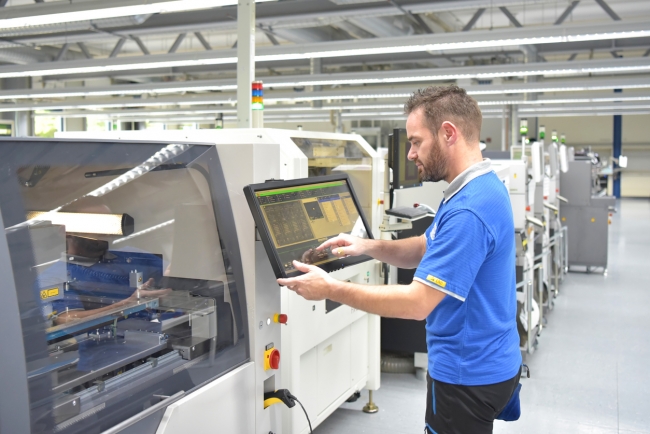7 minute read • published in partnership with Potter Clarkson
How can engineering and manufacturing businesses maximise the value of their hidden digital assets?
Historically, engineering conjured up images of ‘just making things’. Today engineering is much more complex and plays a pivotal role in almost every sector. Moreover, while machinery, packaging and industrial processes still have an enormous part to play in engineering and manufacturing, projects are now just as likely to involve AI, innovative new materials, additive manufacturing, alternative energy sources and biotechnology innovations. This means that today an engineering or manufacturing business is – like every other type of business – a digital business. Christopher Hartland from Potter Clarkson looks at why engineering and manufacturing businesses should maximise the value of their hidden digital assets.
If you don’t believe me, let me put forward an example. A manufacturing business develops an alternative automated approach for controlling their equipment that leads to reduced manufacturing times or costs. This immediately injects a sizeable digital element into the business even though this digital element is part of the manufacturing process.
This digital element will have hidden value, value that will never realise its financial and commercial worth if it remains hidden, ignored and/or unprotected. Instead, this hidden value needs to be captured and leveraged in the same way as all the other IP at the heart of your business.
What digital IP might your business have?
Let’s look at the three primary registrable IP rights, patents, designs, and trade marks in turn.
When it comes to protecting digital inventions, patents are probably the first IP right that comes to mind. However, if your invention is based around software you have developed, it can be difficult, if not impossible, to use patents to protect the underlying algorithms, the way it is applied to new scenarios, the automation of known processes and the data it uses/produces.

Picture: Getty/iStock
However, you may be able to prove your invention has “a technical effect” (as the patent offices like to say). Unfortunately, for most people at least, this phrase doesn’t mean much. I find it helpful to think about the technical effect criterion in terms of whether the improvement given by your invention is:
• Measurable
• Repeatable
• Objective
Once you have identified the part of you invention that meets these three criteria, then you can ask yourself if that remaining part of your invention is obvious or not. If it seems that even part of your invention meets these requirements, the software you have developed could well be patentable.
If it isn’t patentable, you may still be able to protect your digital innovations using trade secrets.
Trade secrets are all too often the forgotten IP right. Many businesses still think they don’t have any trade secrets. However, if your business has information that is kept secret, has commercial value (now or in the future) and has access to those secrets limited to need-to-know people within your business, you do have trade secrets.
If your digital IP isn’t patentable, trade secrets can often provide the protection you want because they can protect multiple facets of your technology. With regards to an engineering business this could be:
• How a particular piece of tech works within your manufacturing processes
• A formula
• A working practice
• A manufacturing process
• Processed data
• An algorithm
• Coding
• The way you use the data you generate
Trade secrets can also be applied to the commercial side of your business, market intelligence, competitor analysis or client or target data.
When it comes to protecting digital innovation in an engineering or manufacturing context, designs for the digital aspect can also be hugely important to complement design protection for the physical products.

Picture: Getty/iStock
If we go back to the previous example, the automated approach this engineering business has created might be extremely intuitive, user-friendly and unique because of the unique user interface (UI) it sits behind. The look, feel and functionality of the interface can be protected by designs. This adds value if the business plans to sell or otherwise distribute the automation software, as it adds an extra barrier that competitors must design around, thereby increasing the barrier to competition.
Traditionally, businesses have protected their company names, logos and even mottos with trade marks. But if you are a business who has developed a customer app, what are your consumers or clients interacting with every day? I’ll give you a hint. They click on it every time they want to use your app. That’s right, your app icon. This is more compact than your name and might be simpler than your logo, but it is that little icon that consumers start to really associate with your brand through repeated interaction.
Your app may also contain icons and animations you have developed solely for use within the app. Again, these can be protected by either static or event animated designs and protected in a fraction of the time and at a fraction of the cost of pursuing patent protection.
Protecting AI and Machine Learning Inventions
Huge numbers of engineering businesses are now developing inventions that contain at least an element of AI or machine learning (ML).
Most commonly, AI is being used to:
• Generate design options based on specified criteria and constraints to improve current design, efficiencies and performance.
• Simulate possible improvements to engineering systems by analysing historic data to predict future performance and identify/remedy potential failings.
• Achieve optimal design configurations.
• Detect errors or inconsistencies in engineering designs by comparing design data with established rules and standards.
• Facilitate greater collaboration between designers/design teams and streamline decision making.
• Reduce time-consuming and repetitive tasks.
However, despite the obvious benefits these outcomes are delivering for engineering businesses, too many are still not taking the required steps to protect this type of invention. There are several risks you will need to navigate when it comes to protecting the data behind AI/ML innovations. These include:
• Finding the best way to ensure you can definitely use your AI for what you want to use it for (both now and in the future).
• Proving you actually own both the data and the algorithm being used to drive the AI.
• Making sure the tech and the underlying data in your AI invention are not accessible by your competitors.
It is also important to remember that the serious questions surrounding the patentability of AI/ML developed innovations remain unresolved around the world. Several ‘test case’ applications have been filed around the world listing an AI program called “DABUS” as the sole inventor. The question as to whether an AI can be listed as an inventor have largely been met with a firm “no” by courts. This has led to these applications being rejected. However, appeals are ongoing, so the situation is unlikely to be finally determined for some time yet.

Picture: Getty/iStock
So, what does this mean for protecting IP relating the use of AI/ML, either in the development process of non-AI related inventions, or in inventions relating to improved AI/ML techniques?
While listing an AI as an inventor for a patent application does not appear to be a good idea (at least for the moment), this does not mean that IP relating to AI/ML cannot be protected.
However, care must be taken to ensure that protection can be obtained for the key innovations relating to this subject and we’d suggest you follow these three tips if you want to develop an effective strategy for protecting IP relating to AI/ML innovations:
1 – Don’t be put off and act quickly!
2 – Confirm where the invention is.
3 – Balance the potential for using patents vs. trade secrets.
The complexity around patenting AI inventions and the developments we are seeing in our every-day practice is so involved it could take up an entirely separate article.
Why should engineering businesses take IP seriously?
Views on the value of IP will vary from company to company, however, one cannot ignore the commercial disaster that would occur if the innovation your business is based on is copied or misappropriated by a competitor.
There is also a cost consideration. IP protection and the ongoing management and development of an IP portfolio and accompanying IP strategy does not come cheap. However, as the composition of the IP portfolio for an engineering or manufacturing business continues to adapt to the fact every business is now – in some shape or form – a digital business, a company needs to consider the value of their IP rather than just the cost.
Here are the key benefits of identifying, protecting, exploiting and enforcing all your IP in all areas of your business:
• It will positively impact on your revenues as well as the value of your business (should you be considering an exit or seeking investment) and your share price.
• It provides you with a bargaining tool which helps minimise the risk of you finding yourself in a costly, time consuming and reputationally damaging infringement action.
• It will ringfence your competitive advantage.
• It could enable you to take advantage of tax and other government incentives, particularly if the digital assets you are developing have some sort of sustainable or environmental slant.
However, you will only enjoy the full value of these benefits if you maximise the potential of all your IP, physical and digital which takes us back to the main point of this piece. Remember that you have key digital assets sitting within your business because you are no longer just an engineering or manufacturing business. You are a digital business.
